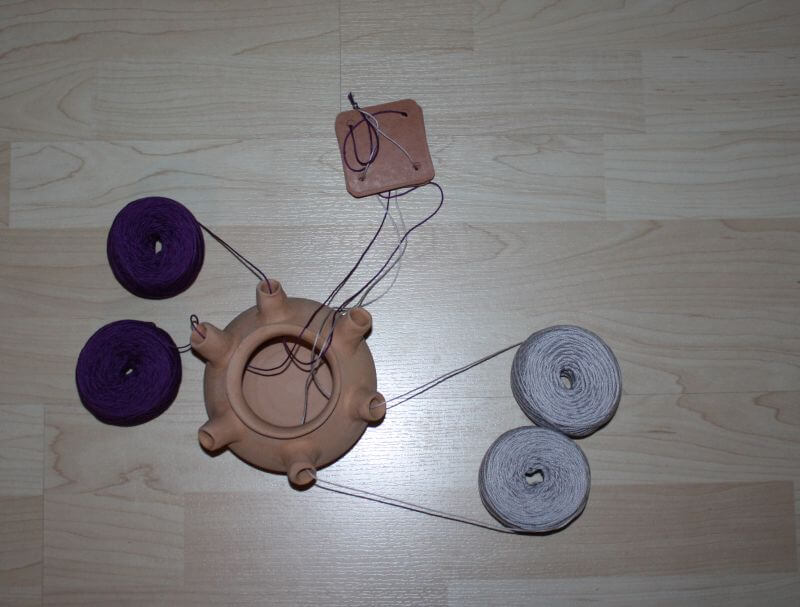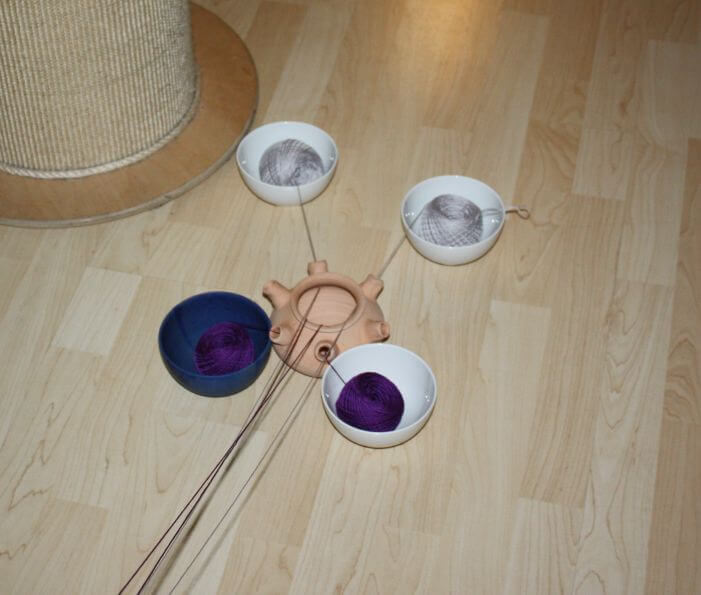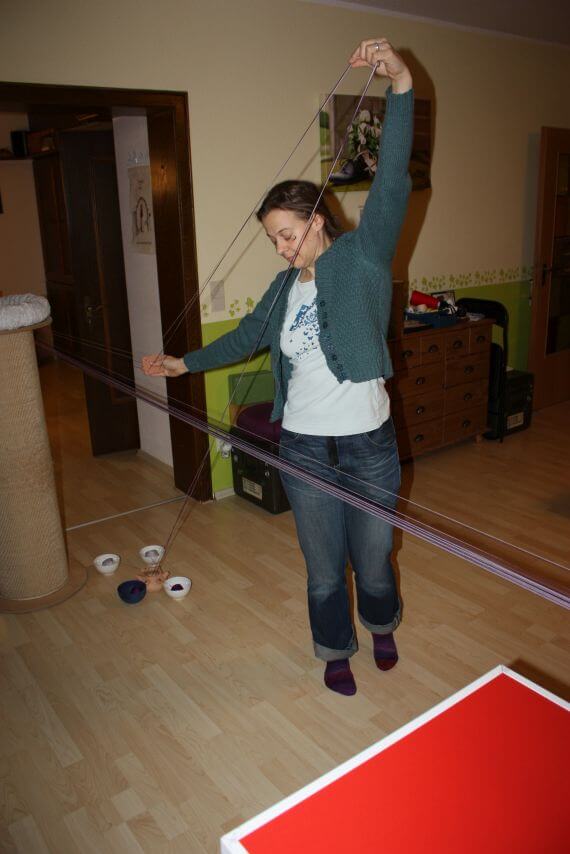...a-changing. Things, in my case.
I have mentioned that there has to be some iron gall ink making to be done - which also involves portioning that ink and packing it into suitable vessels.
Back when I ordered the first batch of ink, I looked for small bottles that would not look obviously modern. I finally found some that loosely resembled an ink bottle I found on a late medieval image (which, to my chagrin, I did not write down, so I don't know which one it was anymore). So I ordered those, stoppered them with a cork, put on a plastic shrink collar for extra security before selling, and that was it.
Now, however, these bottles are not available anymore. They have almost-twins, though - with the difference being that my previous ones were corkable only, and the current version has a screw-on top.

Which is, obviously, very much non-medieval. However, it is also a good bit safer against spillage than a cork. So after a good bit of thinking, and looking for an alternative bottle version that resembles medieval forms and is suitably small (which I did not find), I did order the modern twin of my old bottle.
I'd prefer selling the perfect ink bottle - but that is not possible unless I'd get a glassmaker to make the bottles to order, turning one of my lower-price items into something rather expensive. In addition, most images of scribes show the ink being held in horns for writing, and only some show bottles with more ink supply, those being considerably larger than the amounts needed by today's users. So these small bottles are a compromise from the very start.
Which means that in the future, if you buy ink from me, you will get a small bottle with a travel- and transport-safe, modern screw-on lid.
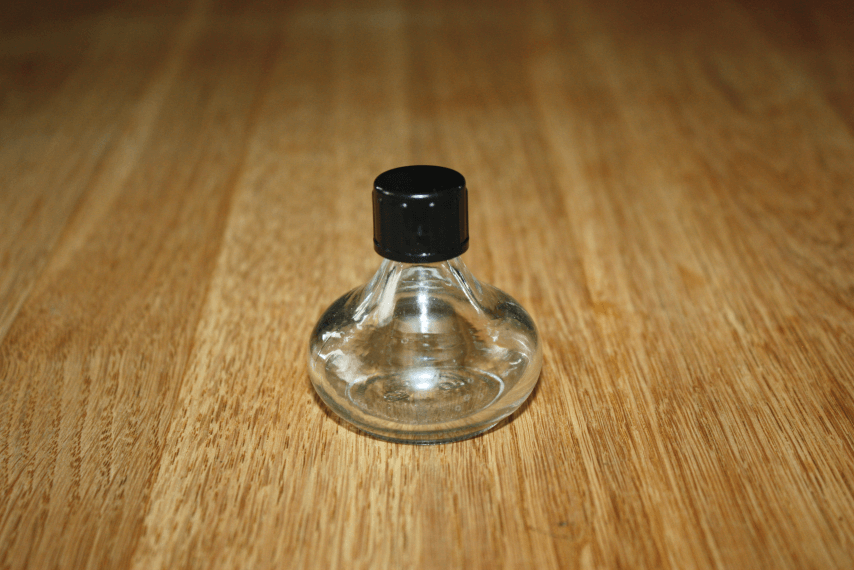
You will also, along with this, get a small cork stopper that you can use instead of the screw-on lid, if you want - because you like corks better, or because you will be using the ink in an environment where things should not be obviously modern.
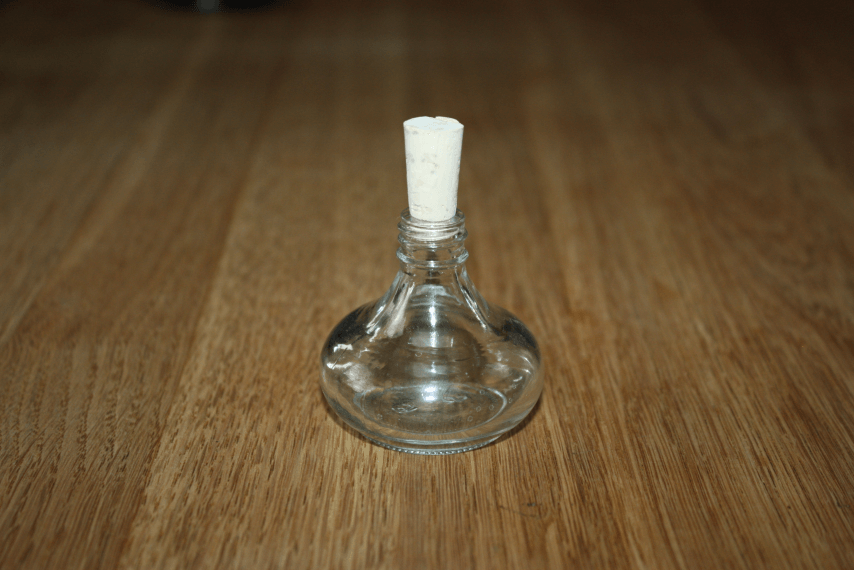
And now I hope that this is a good enough compromise not only for me, but for my customers, too...
I have mentioned that there has to be some iron gall ink making to be done - which also involves portioning that ink and packing it into suitable vessels.
Back when I ordered the first batch of ink, I looked for small bottles that would not look obviously modern. I finally found some that loosely resembled an ink bottle I found on a late medieval image (which, to my chagrin, I did not write down, so I don't know which one it was anymore). So I ordered those, stoppered them with a cork, put on a plastic shrink collar for extra security before selling, and that was it.
Now, however, these bottles are not available anymore. They have almost-twins, though - with the difference being that my previous ones were corkable only, and the current version has a screw-on top.

Which is, obviously, very much non-medieval. However, it is also a good bit safer against spillage than a cork. So after a good bit of thinking, and looking for an alternative bottle version that resembles medieval forms and is suitably small (which I did not find), I did order the modern twin of my old bottle.
I'd prefer selling the perfect ink bottle - but that is not possible unless I'd get a glassmaker to make the bottles to order, turning one of my lower-price items into something rather expensive. In addition, most images of scribes show the ink being held in horns for writing, and only some show bottles with more ink supply, those being considerably larger than the amounts needed by today's users. So these small bottles are a compromise from the very start.
Which means that in the future, if you buy ink from me, you will get a small bottle with a travel- and transport-safe, modern screw-on lid.

You will also, along with this, get a small cork stopper that you can use instead of the screw-on lid, if you want - because you like corks better, or because you will be using the ink in an environment where things should not be obviously modern.

And now I hope that this is a good enough compromise not only for me, but for my customers, too...




